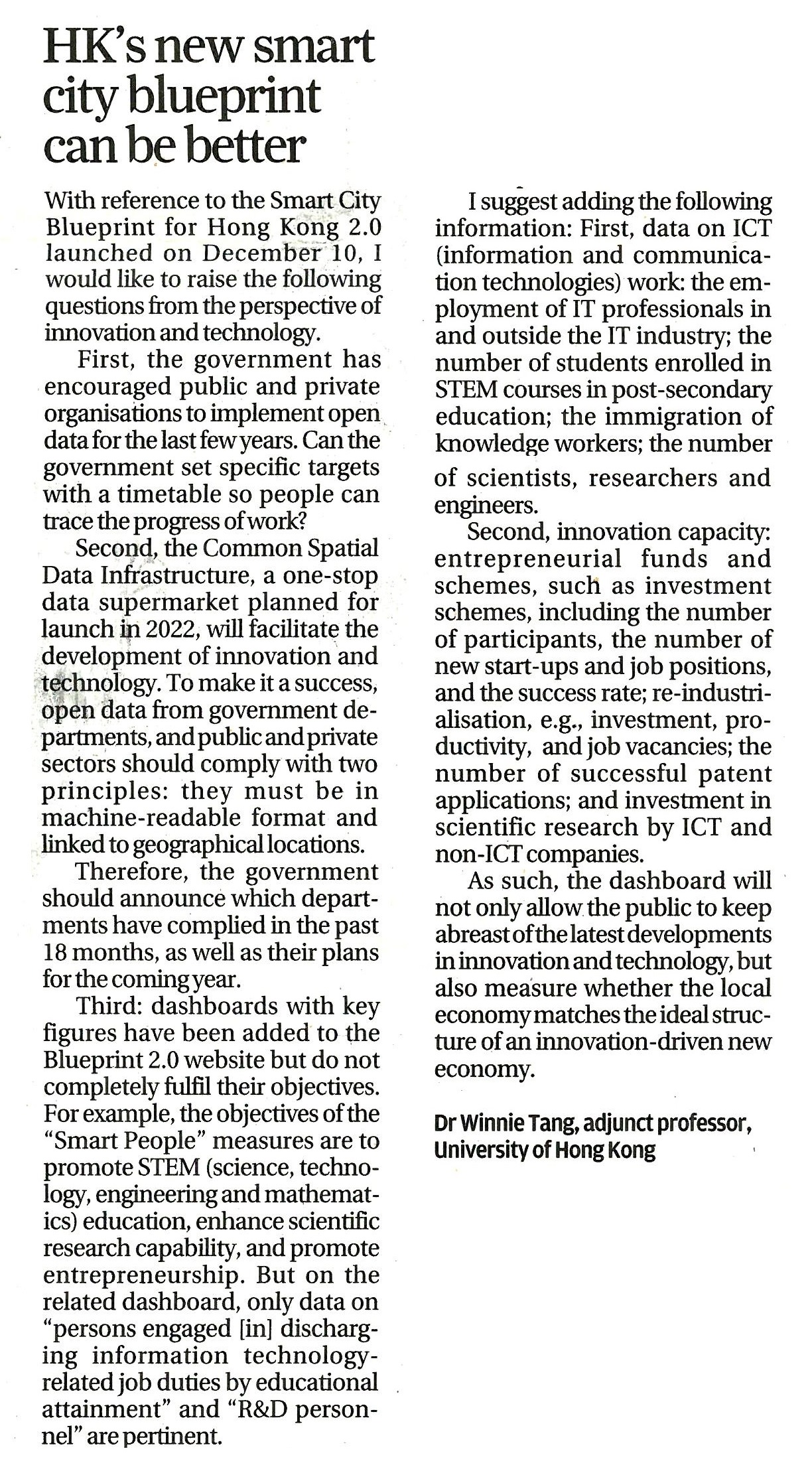網上版請按此

HK's new smart city blueprint can be better
With reference to the Smart City Blueprint for Hong Kong 2.0 launched on December 10, I would like to raise the following questions from the perspective of innovation and technology.
First, the government has encouraged public and private organisations to implement open data for the last few years. Can the government set specific targets with a timetable so people can trace the progress of work?
Second, the Common Spatial Data Infrastructure, a one-stop data supermarket planned for launch in 2022, will facilitate the development of innovation and technology. To make it a success, open data from government departments, and public and private sectors should comply with two principles: they must be in machine-readable format and linked to geographical locations.
Therefore, the government should announce which departments have complied in the past 18 months, as well as their plans for the coming year.
Third: dashboards with key figures have been added to the Blueprint 2.0 website but do not completely fulfil their objectives. For example, the objectives of the "Smart People" measures are to promote STEM (science, technology, engineering and mathematics) education, enhance scientific research capability, and promote entrepreneurship. But on the related dashboard, only data on "persons engaged [in] discharging information technology-related job duties by educational attainment" and "R&D personnel" are pertinent.
I suggest adding the following information: First, data on ICT (information and communication technologies) work: the employment of IT professionals in and outside the IT industry; the number of students enrolled in STEM courses in post-secondary education; the immigration of knowledge workers; the number of scientists, researchers and engineers.
Second, innovation capacity: entrepreneurial funds and schemes, such as investment schemes, including the number of participants, the number of new start-ups and job positions, and the success rate; re-industrialisation, e.g., investment, productivity, and job vacancies; the number of successful patent applications; and investment in scientific research by ICT and non-ICT companies.
As such, the dashboard will not only allow the public to keep abreast of the latest developments in innovation and technology, but also measure whether the local economy matches the ideal structure of an innovation-driven new economy.
Dr. Winnie Tang
Adjunct Professor, Department of Computer Science, Faculty of Engineering; Department of Geography, Faculty of Social Sciences; and Faculty of Architecture, The University of Hong Kong